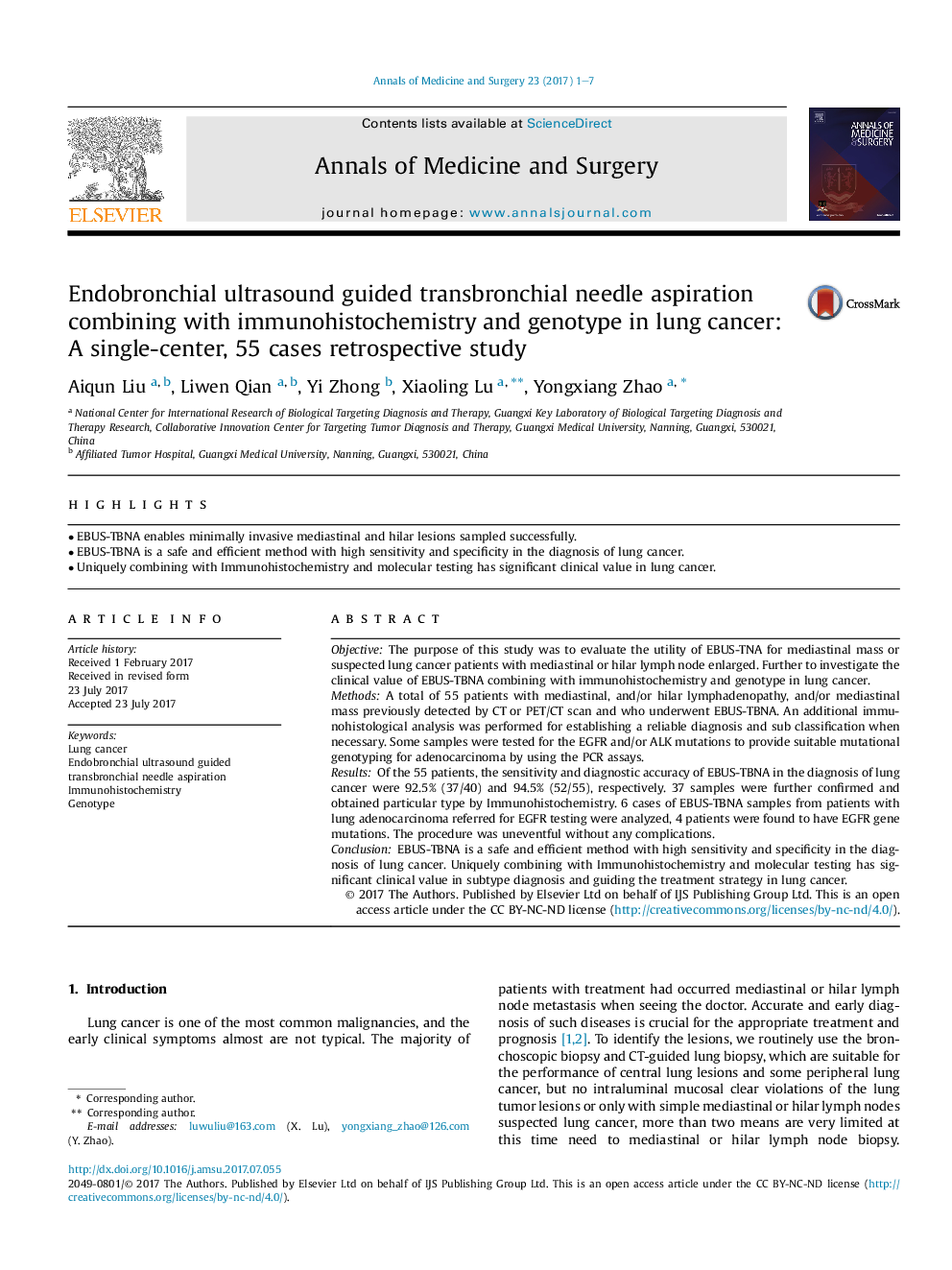| Article ID | Journal | Published Year | Pages | File Type |
|---|---|---|---|---|
| 5722839 | Annals of Medicine and Surgery | 2017 | 7 Pages |
â¢EBUS-TBNA enables minimally invasive mediastinal and hilar lesions sampled successfully.â¢EBUS-TBNA is a safe and efficient method with high sensitivity and specificity in the diagnosis of lung cancer.â¢Uniquely combining with Immunohistochemistry and molecular testing has significant clinical value in lung cancer.
ObjectiveThe purpose of this study was to evaluate the utility of EBUS-TNA for mediastinal mass or suspected lung cancer patients with mediastinal or hilar lymph node enlarged. Further to investigate the clinical value of EBUS-TBNA combining with immunohistochemistry and genotype in lung cancer.MethodsA total of 55 patients with mediastinal, and/or hilar lymphadenopathy, and/or mediastinal mass previously detected by CT or PET/CT scan and who underwent EBUS-TBNA. An additional immunohistological analysis was performed for establishing a reliable diagnosis and sub classification when necessary. Some samples were tested for the EGFR and/or ALK mutations to provide suitable mutational genotyping for adenocarcinoma by using the PCR assays.ResultsOf the 55 patients, the sensitivity and diagnostic accuracy of EBUS-TBNA in the diagnosis of lung cancer were 92.5% (37/40) and 94.5% (52/55), respectively. 37 samples were further confirmed and obtained particular type by Immunohistochemistry. 6 cases of EBUS-TBNA samples from patients with lung adenocarcinoma referred for EGFR testing were analyzed, 4 patients were found to have EGFR gene mutations. The procedure was uneventful without any complications.ConclusionEBUS-TBNA is a safe and efficient method with high sensitivity and specificity in the diagnosis of lung cancer. Uniquely combining with Immunohistochemistry and molecular testing has significant clinical value in subtype diagnosis and guiding the treatment strategy in lung cancer.
